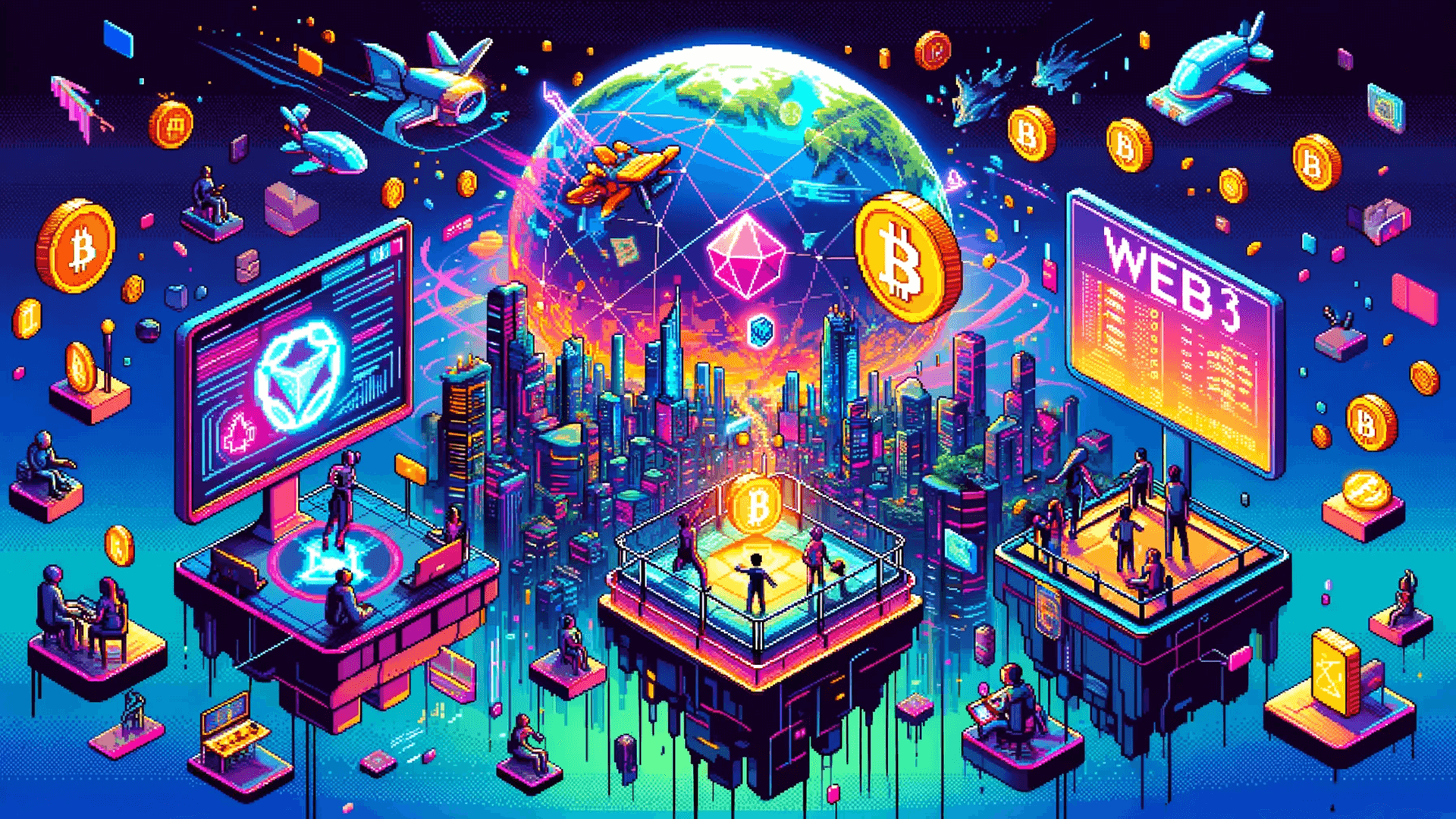Web3 promises to be a paradigm-shifting technology for game economies, player ownership, and game design.
Web3 technology and tactics have provided new avenues for funding game development, and added new revolutionary avenues for decentralized economic systems within games. These system are foundational for new game economies which can align the incentives of content creators, gamers, and game developers.
The promise of interoperability within web3 games offers innovative ways to collaborate between game developers that are impossible in the traditional gaming space.
The emergence of web3 offers an alternative to reliance on centralized platforms. The decentralized and transparent nature of blockchains offers a more open environment for game developers and puts players on more even footing – unlike the opaque monoliths which dominate traditional gaming.
Web3 adoption has not been without setbacks though – from crypto crashes to bad actors in the space. Since the inception of web3 gaming around 2017 – with the release of Decentraland and CryptoKitties – there have been a multitude of lessons learned. Despite regular refrains on the death of web3 gaming – these games continue to pick up pace in VC funding and gamer adoption.
As web3 gaming shapes up for its best market run yet, the industry is beginning to establish playbooks and best practices. In this article, learn everything there is to know about web3 gaming and web3 marketing – from useful terms, lessons learned, and actionable marketing strategies.
CHAPTERS
- What is web3 gaming?
- The web2 ecosystem vs web3 ecosystem
- Diving deep into web3 games and web3 marketing
- Challenges in web3 gaming
- How to build a better web3 game: The web2.5 mullet
- How to really launch a web3 game
- What is the future of web3 gaming?
- Key takeaways
What is web3 gaming?
Web3 games are built upon “web3” technology – namely cryptocurrency and blockchain. Web3 technology is structurally different than that of traditional gaming platforms – using decentralized applications and a public ledger in an attempt to address critical issues such as data security, interoperability, open access, user trust, and ecosystem transparency.
By leveraging blockchain technology, game developers hope to provide a secure and transparent way for gamers to verify, store, trade, own, use, and create digital assets. These games generally include some combination of the following underlying infrastructure:
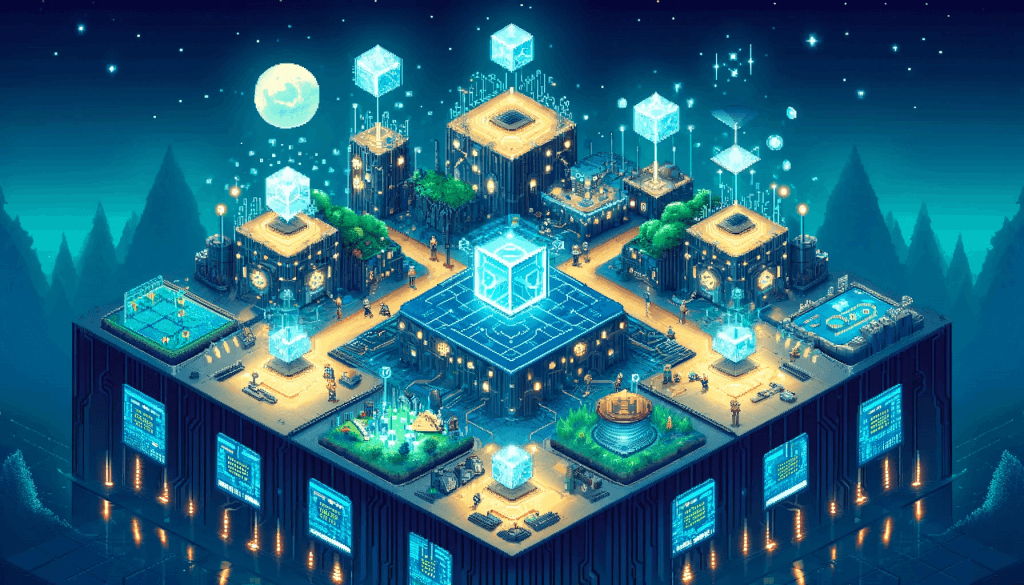
Tokens and NFT marketplaces
Non-fungible tokens (NFTs) are digital assets built on blockchain technology. These tokens represent ownership of a unique item or collectible. NFT marketplaces ultimately let players own and trade unique in-game items. This creates new opportunities for game developers to monetize content, reward creators, and give players a more meaningful stake in the games they make.
Digital wallets
Digital wallets are the essential technology for storing and managing digital assets such as in-game currencies and items, as well as for executing transactions on the blockchain. Moreover, players’ experiences in web3 gaming can be tailored based on the unique digital assets they hold in their wallets, providing a form of brand loyalty and segmentation similar to traditional sectors.
Within the web3 gaming space, there are two different kind of wallets, hosted wallets and non-custodial wallets.
Hosted wallets
Hosted wallets – sometimes also called first-party custodial wallets or game-hosted wallets – are wallets provided by game developers or publishers. With these wallets, users typically create a game account and the game provider manages the private keys. These wallets are convenient for in-game transactions, but also carry risks if the game provider’s security measures are compromised.
Non-custodial wallets
Non-custodial wallets, sometimes referred to as self-custodial wallets, are wallets where the user has full control over their private keys. These wallets provide greater security, as individual users are responsible for safeguarding their private keys (this does, however, mean users have a greater responsibility to treat their private keys with care). Examples of these wallets include non-custodial wallets from MetaMask and hardware wallets like Ledger or Trezor.
Smart contracts
Smart contracts are self-executing contracts used to automate voting and decision-making in web3 gaming communities. Thanks to the immutable and transparent nature of blockchain technology, smart contracts provide a secure system for managing digital assets, ensuring that ownership and transfer are traceable and tamper-proof. Furthermore, smart contracts also enable the creation of complex player-driven economies within web3 games by allowing players to earn real-world rewards for their actions – thereby incentivizing engagement and supporting a sustainable gaming ecosystem.
Web3 libraries and dapps
Web3 libraries are software libraries that provide developers and content creators tools to interact with blockchain networks and build decentralized applications. Web3 gaming decentralized applications (dapps) run on a blockchain and are built on web3 libraries.
Node and web3 providers
Nodes or web3 providers extract gaming information stored on a blockchain. They also maintain and verify the blockchain’s security, integrity, and decentralization. These nodes act as a bridge between dapps and the blockchain, allowing developers to send transactions, read blockchain data, and interact with smart contracts.
The web 2.0 ecosystem vs web3 ecosystem
Roughly the last decade has been the era of web2. This is the era of mainstream app stores, social media giants, centralized online forums, websites, and e-commerce. Web3 is a distinct evolution of web2, with several new technological innovations and differing philosophies.
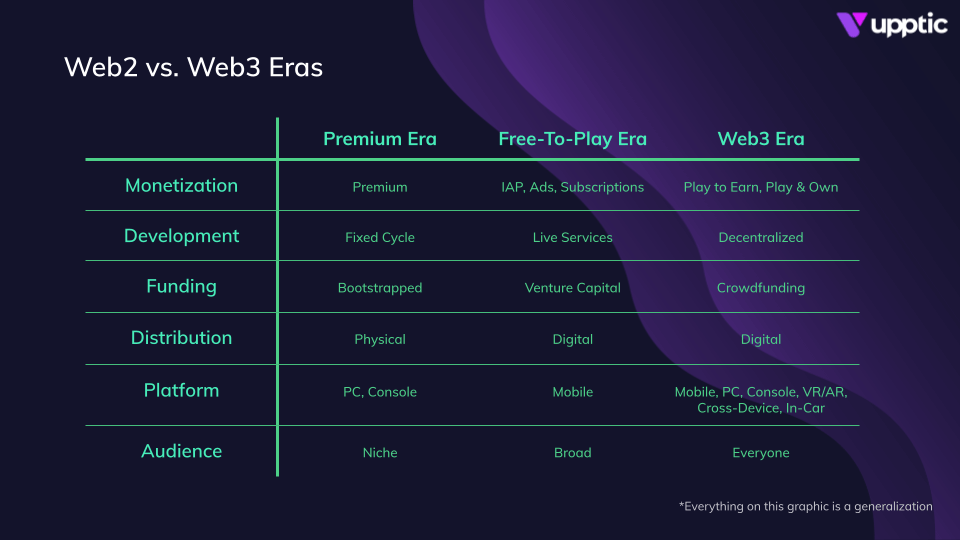
The web2 ecosystem: Establishing the standard
The web2 era formed the infrastructural foundation for today’s digital games – including in-app purchases, microtransactions, and other fundamental mechanics. Additionally, underlying web and marketing services – such as social media, websites, and apps – were the defacto distribution methods for web2. However, web2 infrastructure operates on centralized platforms and is functionally opaque – leading to data consolidation and monopolization in the digital marketing and gaming spaces.
Web2 game development: Made by traditional business organizations
Web2 games are typically developed by game studios. Once the game is ready for launch, the studio will either publish the game themselves or work with a game publisher. In either case, the end users (i.e. gamers) do not play a large role in the development or digital marketing of most traditional web2 games.
Web2 monetization: Premium and freemium
Web2 games make use of two main monetization methods: premium and freemium. With premium games, players make a one-time purchase and get full access to an entire game –which is still standard in PC and console gaming. Freemium games, also known as free-to-play (F2P) games, meanwhile, are generally free to download but are monetized through in-app purchases or in-game ads. While mainly used for mobile games, this monetization model has become so successful that it generates 78% of gaming revenue – even accounting for premium sales on consoles and PC.
Web2 distribution: Mainstream app stores
In the web2 landscape, app stores are the main distributor of games. These centralized platforms include Android’s Google Play and Apple’s App Store for mobile games, the Playstation Store, Microsoft Store, and Nintendo eShop for consoles, and Steam Store and Epic Games Store for PC. With just a handful of distribution channels to choose from on any given platform, app stores wield a lot of power in web2 gaming.
Web2 marketing: Digital advertising and content marketing
Marketing web2 games is fairly traditional, utilizing paid advertising and content marketing with ad networks and social media platforms – alongside partners and platforms like AppsFlyer, Singular, Gamesight, Upptic, Facebook, TikTok, Instagram, Twitter (X), and more.
The web3 ecosystem: Decentralized with digital asset ownership
The evolution from traditional premium and freemium models to blockchain-powered web3 games marks a new era and has the potential to be revolutionary for the games industry. Web3 games can provide players with full ownership and control over their virtual assets – and make them more prominent stakeholders in the games they play – offering a significant shift from the centralized gaming models of web2.
Web3 gaming’s asset portability also theoretically allows for players’ in-game achievements and assets to be acknowledged and used across different blockchain-based platforms and games, bringing true cross-platform and cross-game gameplay closer to reality. Additionally, there are new and exciting opportunities for people to create content and make money from residuals as their content gets traded across the web3 ecosystem.
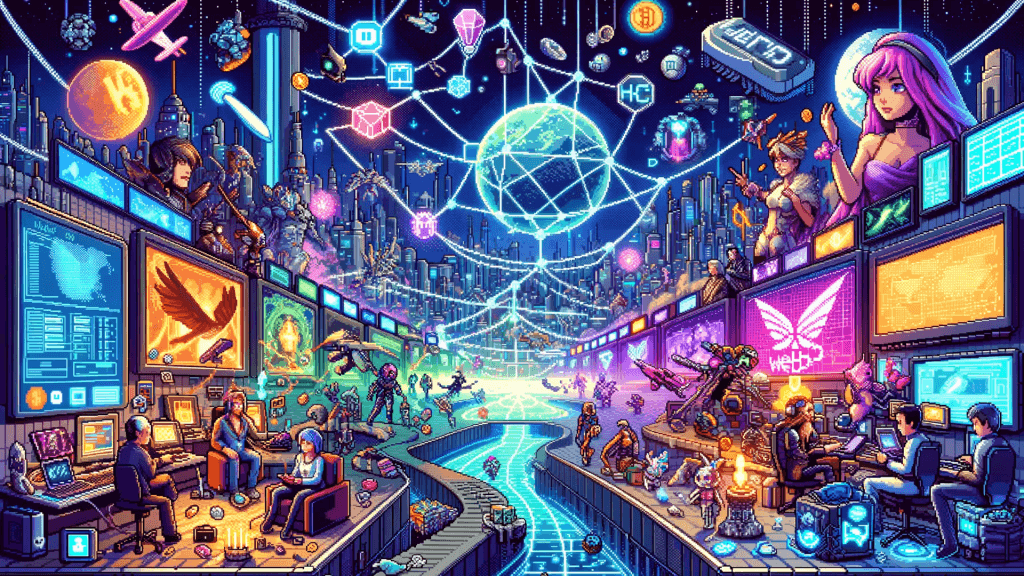
Web3 game development: Making gamers part of the development process
Historically, the approach to web3 game development has been very different – often being much more collaborative with gamers than in traditional web2 game development. This is largely because many web3 game developers would begin the game development journey with a token launch to fund the development itself. Consequently, gamers who purchase the game’s token would have an ownership stake in the game – taking on a bigger role in guiding development of the game. The additional inclusion of DAOs (decentralized autonomous organizations) makes web3 game development even more nuanced and decentralized than web2 game development often is.
Web3 monetization: Play-to-Earn (P2E) and Play-and-Own (P&O)
To date, most web3 games have employed token economies and followed a play-to-earn or play-and-own monetization scheme – though these are not without issues and monetization is continuing to evolve in web3 (as we’ll see in coming sections).
Play-to-Earn (P2E) games provide gamers rewards through in-game NFT assets. These assets can be traded or sold for actual money on NFT marketplaces. Play-and-Own (P&O) games include P2E mechanics, but place more emphasis on community and fun – tying in-game assets to characters, narratives, and community engagement.
In both models, game developers make money through token purchases or derivatives from trades made on NFT marketplaces.
Web3 distribution: Decentralized and fragmented
The distribution of web3 games has also been a bit of an evolving phenomenon – as we’ll learn in upcoming sections. Historically, many app stores have refused to include web3 games because of their associations with crypto. As a result, many web3 gamers had to download web3 games directly from the game developer’s website. This has created an incredibly fragmented and decentralized web3 gaming ecosystem.
Web3 marketing: Community-driven and organic
Web3 games marketing, historically, has been largely community-driven and organic – often due to web3 limitations and challenges. Not only are many web3 “natives” turned off by traditional advertising, but, because of the decentralized nature of blockchains, performance marketing strategies have proven extremely difficult, if not impossible to execute. Additionally, many web3 natives shun traditional social media platforms – opting instead for more decentralized platforms like Discord.
Given the decentralized nature of these games, many of them grow through word-of-mouth, collaboration with gaming communities, and influencer promotion. The role of community-driven marketing is crucial in this landscape, as it fosters engagement, community building, and trust within the web3 gaming community through meaningful connection and transparent interactions. This approach includes collaborating with influencers, hosting virtual events, and leveraging user-generated content to cultivate vibrant and loyal web3 communities.
Diving deep into web3 games and web3 marketing
As noted earlier, there are some stark differences between web2 and web3 games and digital marketing. The use of decentralized applications, open marketplaces, and NFTs has led to a very different ecosystem than web2.
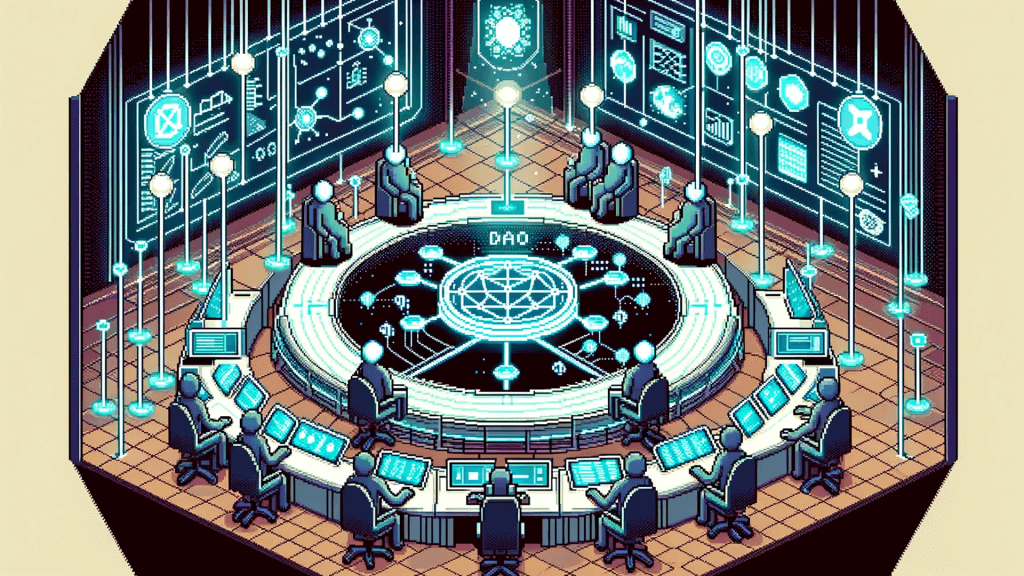
Who are the key players in web3 gaming?
The evolution of Web3 gaming has not only changed the gaming experience but also changed who is a part of the ecosystem and what roles they play. The web3 gaming ecosystem has thus become a network of key players including traditional game publishers and innovators like DAOs, gaming guilds, product incubators, and independent game developers.
Decentralized Autonomous Organizations (DAOs)
Standing tall among the major components of web3 gaming are DAOs – decentralized organizations that often emphasize a more equitable ownership stake amongst players, developers, investors, and traders. Gaming DAOs come in different forms – such as guilds, incubators, accelerators, and developers.
Gaming guilds
Gaming guilds are decentralized communities of players that are organized around a common interest or goal and governed by smart contracts. Popular DAO gaming guilds include Yield Guild Games, Merit Circle, UniX Gaming, Avocado DAO, and Good Games Guild.
Incubators and accelerators
Incubators and accelerators provide funding, mentorship, technical expertise, and tools for web3 game developers. Popular web3 gaming incubators and accelerators include The Sandbox Metaverse Accelerator Program and The Cronos Accelerator Program.
Game developers
Many game developers in the web3 ecosystem leverage its decentralized technologies to empower their players to take a more active role in game development. By operating DAOs, they foster a game development process that is community-driven, where decisions are made through voting and funds are raised through crowdfunding and token sales. This approach gives players an ownership stake in their games, further distinguishing web3 game development from traditional approaches.
Traditional gaming companies
In addition to companies that have been born and raised in the digital world of web3 gaming, many established web2 companies are also making the leap to web3. These include game developers and publishers like Ubisoft, Atari, Tencent, Epic Games, and Animoca Brands.
Marketing companies
Because of the difficulty with measurement and attribution, web3 marketing companies are few and far between. Adding to the difficulty of marketing in web3 are the lack of native ad networks and social media platforms. That said, companies like Spindl, Helika, Adjust, and Upptic are working to connect the dots necessary to make attribution and measurement easier for web3 game marketers.
How do you launch a web3 game (historically)?
Historically, without the industry support of, or player desire for, more traditional distribution and digital marketing strategies, launching a web3 game has been a much different beast than launching a web2 game. And, to date, no “traditional” web3 game has broken into the mainstream.
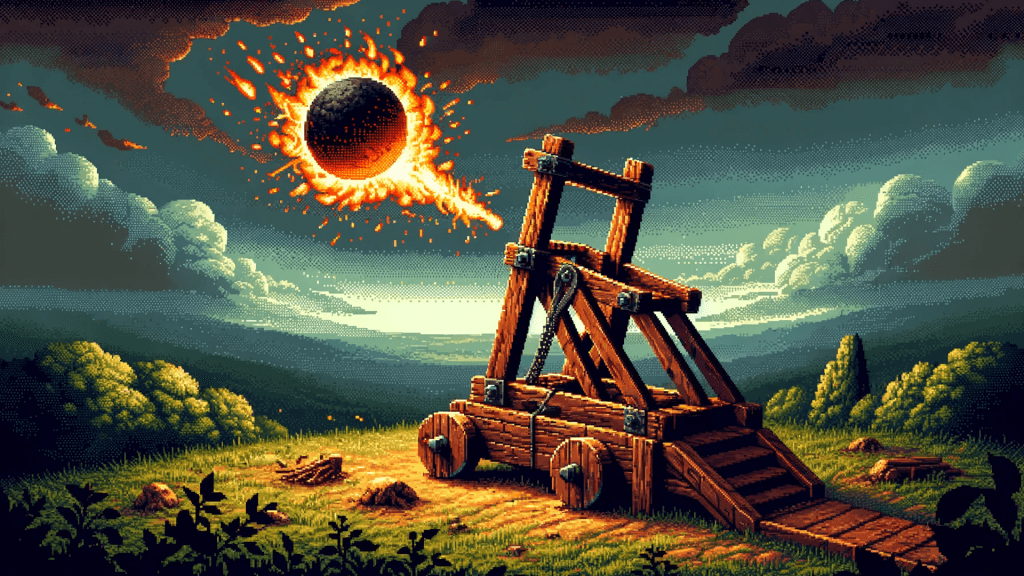
Development phase
The development phase of a traditional web3 game often starts with community engagement – using crowdfunding and token sales to raise the money needed for game development. These early adopters also had a larger stake in game development as well – often acting as player-owners and collaborating alongside the developers themselves in spaces like Discord to bring the game to fruition.
Soft launch phase
In soft launch, players can playtest the alpha and beta builds of the game, providing game developers with valuable insights on bugs and technical errors – as well as how much players enjoy the game mechanics, characters, story, art, and music.
Global launch phase
The global launch phase is perhaps most different phase when it comes to launching a web3 game. In this phase, digital marketing starts in earnest and growth begins to scale. Because web3 games have historically been banned from app stores and web3 gamers have loathed paid ads, web3 marketing has heavily relied on engaging directly with game communities on platforms like Discord and Twitter (X) and utilizing innovative strategies involving airdrops, NFT mints, and more.
Challenges in web3 gaming
As you may have noticed from some of the commentary above, web3 gaming faces some unique challenges. Some of these are technical, some of these are cultural, but they all contribute to the barriers keeping web3 games from going mainstream.

Game economies
Can a web3 game with a token-based economy handle a sudden influx of two million players? So far, it doesn’t seem to be the case. Due to the limitations required to create a sustainable token economy – such as a fixed supply with a deflationary direction – onboarding hundreds of thousands of players daily may not be feasible or desirable.
Honeyland Creator Corey Wright states: “If you look at Axie, when they had 2 million daily active users that put web3 gaming on the map. It helped them reach a $10 billion market cap. It did all these great things. It was also probably the exact reason that they couldn’t sustain that economy because web3 games, just because of the limitations that need to exist to be successful, probably aren’t looking to bring in a million daily active users like Candy Crush.”
Player onboarding, user acquisition, web3 stigma
Even if a web3 game economy could support millions of daily active users, getting them into the game is another challenge, altogether. Onboarding players into web3 games often requires an underlying knowledge of web3 and web3 tools, like a digital wallet. Since the majority of gamers don’t have these, many web3 games remain blocked from mainstream adoption.
Additionally, marketing strategies for web3 games and acquiring new users has proven to be challenging as well. Many web3 “degens” shun traditional advertising. This has required web3 game developers to build brand new community-driven marketing strategies – partnering with game communities and working closely with gamers to fundraise and launch their games.
The pool of web3 gamers is also just a small slice of the overall gamer pie – so web3 game developers have been keen to go after web2 gamers. However, in addition to the onboarding problems mentioned above, many web2 gamers take a very skeptical, if not outright antagonistic, approach to web3 games and technology – making conversion doubly difficult.
This is due, in part, to bad actors inside web3 gaming and the larger crypto space. With high profile cases such as the collapse of Celsius and FTX – and Sam Bankman-Fried’s trial and conviction – many people remain very leery of web3 as a whole.
Monetization
Monetizing web3 gamers has also proven to be particularly tricky. Token mints are not a sustainable source of revenue – and dividends from marketplace trading has limitations as well, especially when the trading pool is small. It gets even worse when you consider that many web3 gamers may engage with games with the hope of making money themselves – given the P2E model of many early web3 games. To date, successfully monetizing a P2E web3 game has been elusive.
Distribution
As mentioned earlier, many platforms have refused to allow web3 P2E games onto their app stores because of their associations with crypto and real-world rewards. Without these mainstream distribution channels, hitting mainstream adoption is nearly impossible.
Marketing to web 2.0 audiences
Because of the decentralized and fragmented nature of web3 games, attribution and measurement is particularly difficult. Companies like AppsFlyer, Spindl, and Upptic work in different ways to connect dots and paint a complete picture of a web3 game’s marketing funnel and the users therein, but many solutions are still a bit of a patchwork, at best. This has made performance marketing targeting web2 audiences particularly difficult.
How to build a better web3 game: The web2.5 mullet
As mentioned earlier, web3 gaming has been through a lot of ups and downs. However, through this trial-and-error, there are some ideas and best practices that are becoming apparent. One of them is that web3 games do better as a “mullet” – web2 front-facing and web3 under the hood. Here’s what that looks like in action.
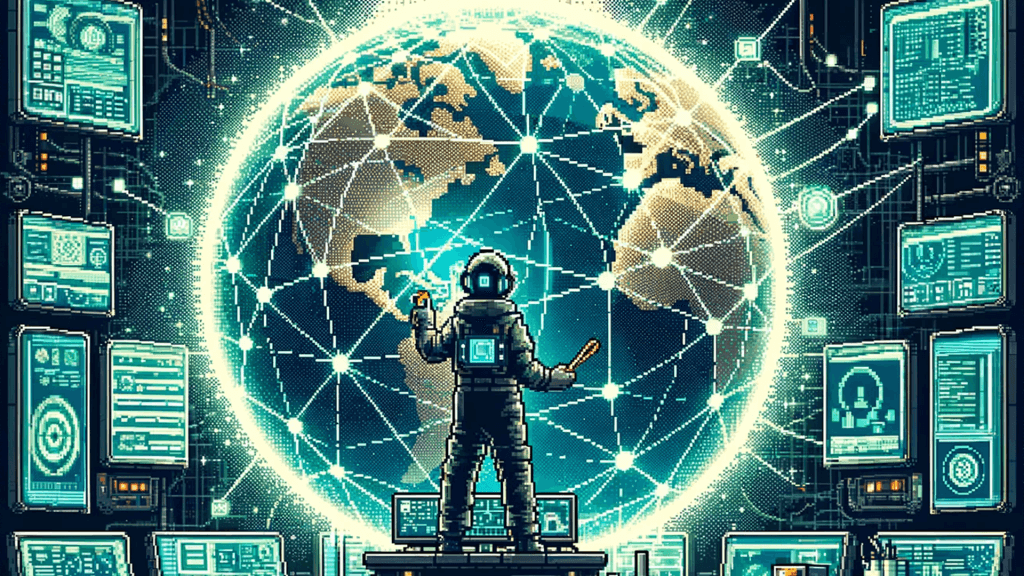
Putting web3 games content first
So far, the P2E and P&O models of gaming have not panned out. Much of this is chalked up to the fact that, as much as it sounds like a good idea on paper, people don’t want to play games for money. Or, rather, making money is not the primary reason people play games.
Instead, people play games as a form of escapism or adventure – to see new worlds, explore new stories, try new things, and challenge themselves. Previous web3 games focused too much on money-making and marketplaces – leading to games that were, quite simply, boring and tedious.
Newer web3 games seem to be learning from these mistakes – putting characters, stories, and engaging game loops first. Meanwhile, web3 technology, such as marketplaces, remain under the hood as part of a holistic gaming experience, rather than the main selling point.
Token utility and necessity
Tokens and tokenization are often considered a crucial aspect of web3 gaming, though its necessity is still up for debate. As mentioned earlier, digital tokens represent various dimensions like ownership, value, or access rights to in-game digital and real-world assets on blockchains.
In web3 games, tokens are often used for weapons, items, currency, accessories, and more – all of which can typically be traded on marketplaces for real-world money. However, the use of tokens has often led to unstable game economies – especially if a game uses multiple tokens or gets too popular and sees a sudden influx of users (which can lead to inflation and destabilization).
If you do decide to use tokens in your web3 game, Honeyland Creator Corey Wright suggests the following: 1) A single-token economy, 2) a fixed supply, and 3) deflationary direction. To ensure this happens, it’s important to incentivize participation in the game ecosystem. There should be a stronger impetus to keep digital assets within the game instead of removing them (e.g. selling them on a marketplace). Because of this, tokens should be tied to characters or stories and create more in-game value through reward programs or similar initiatives.
Reconsider the role of a DAO
DAOs can be great for engaging with online communities of gamers and making them a larger part of the gaming ecosystem. However, when it comes to game development itself, it might be best to use a traditional business structure – otherwise the game development can risk getting bogged down by bureaucracy, politics, and untenable ideas.
Additionally, it’s generally a good idea to innovate on a single axis. Web3 games are already innovating with the use of web3 technology and new monetization models. Innovating on the business structure as well is doubling risk unnecessarily.
Monetization of web3 games
Because P2E and P&O games have proven difficult to monetize, many web3 games are beginning to blend the monetization elements of these kinds of games with traditional F2P game monetization models. While token mints and residuals from marketplace transactions can still provide a significant portion of revenue, in-app purchases can provide a more consistent and sustainable source of mainline revenue – and help support a more stable game economy.
Additionally, other strategies, like subscription models, can lead to a more sustainable revenue flow. Companies like Coinsub offer subscription models for web3 gaming projects to provide consistent and predictable income. Subscription-based models not only enhance the affordability of web3 games but also potentially broaden the player base by making the entry barrier more accessible.
Moreover, web3 games can offer additional monetization avenues through airdrops, quests, and loyalty programs that engage players and provide revenue opportunities.
Distribution of web3 games
Thanks to policy changes from companies like Apple and Google – certain web3 games can now be listed in app stores. That said, it’s not a free-for-all. It’s important to keep most web3 mechanics under the hood and build a game that, at least on its surface, is more F2P than P2E.
Build a better ecosystem and oust bad actors
Perhaps one of the biggest things that can be done to bring web3 gaming to the mainstream is to build an ecosystem that people see as trustworthy and transparent. This is one of the key promises of blockchain technology, but so far the web3 gaming industry has dealt with overpromising and underdelivering, half-baked games, and fraudsters.
The crypto crashes have helped filter out a lot of bad actors, but it’s important that everyone who is still in the game is fostering an ecosystem built on long-term sustainability, great content, transparency, and fair royalties for content creators.
How to really launch a web3 game
Once you’ve built a better web3 game, there are better ways to market it as well. Much like web3 games themselves, marketers are starting to realize that a hybrid strategy which combines web2 and web3 growth strategies can drive more growth at a faster rate than early web3 games growth strategies could alone.
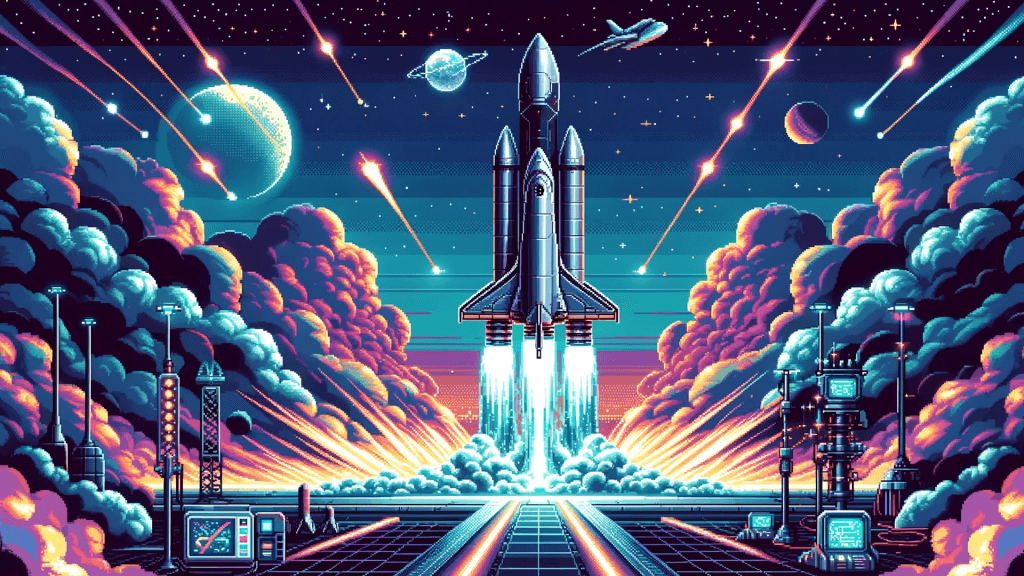
Effective user acquisition tactics
So what are some user acquisition tactics that are actually effective in growing web3 games? It’s best to break them down between web2 and web3 audiences – both of which you’ll need.
Start with web3 gamer audiences
Since web3-native gamers shun traditional advertising, but are highly engaged, it’s best to start out targeting this audience in the early stages of your game development. They can make for great alpha- and beta-testers, as well as provide great word-of-mouth advertising. Here are some key ways to engage web3 gamers.
Airdrops and quests
Airdrops are free gifts sent directly to digital wallets and quests are instantly rewarded tasks. These can be great opening salvos for raising brand awareness and even driving certain actions. Make sure to design quests to balance investment with reward. Additionally, variable rewards, like rare tokens or raffle wins, can boost user engagement.
Engage with web3 gamer communities
In web3 gaming, the community extends beyond being mere spectators to becoming intrinsic parts of the game. Therefore, community-driven development is integral to web3 gaming, giving players a voice in game direction and fortifying marketing efforts through direct involvement. That said, gamer expectations have shifted toward more engaging content and well-developed games rather than incentivizing pre-sales of NFTs and tokens – highlighting a need for genuine value creation.
Make sure you are connecting genuinely with any online communities that you choose to engage with – and take advantage of AMAs, livestreams, user-generated content (UGC), and more. Keep in mind, as well, that web3 gamers tend to congregate on more decentralized platforms, such as Discord.
User acquisition tactics for web2 gamers
Once you have amassed a loyal following of web3 gamers and launched your game in app stores, it is time to switch to targeting a wider audience of web2 gamers. Here are some of the ways marketing to web2 gamers is different from marketing to web3 gamers.

Paid advertising
Web2 gamers tend to respond well to traditional digital marketing – and it is much easier to scale a game with these marketing strategies than web3 strategies. Find out what platforms your target audience uses most and build ads specifically for those platforms. Be sure to keep a close eye on performance and iterate regularly.
A new trend in web3 games growth is using traditional games growth channels (such as paid advertising on Google or TikTok) to drive traditional gamers into web3 games without them needing to understand web3 specifics – or even understand that they’re in a web3 game. When combining this marketing push with a token launch or NFT mint a new tactic has emerged to drive success in web3 games using web2 tactics. Learn how we’ve picked apart this strategy to provide a new explosive web3 growth hack.
Traditional social media
Web2 gamers can also be found on all your major mainstream social media platforms – Facebook, Instagram, TikTok, Twitter, YouTube, Twitch et al. Find the social media platforms your audience congregates on most and build your presence there. Again, make sure to take advantage of AMAs, livestreams, and UGC to connect deeper with your core gamers.
App store optimization (ASO)
ASO is essential to climb the charts in app stores and get seen by your target web2 audience. With many web3 games now able to be listed in app stores, ASO is a critical part of any game’s overall marketing strategy. To excel at ASO, it’s important to iterate quickly and regularly on logo, keywords, screenshots, videos, and descriptions – as well as ensure high ratings by responding swiftly to player feedback and concerns.
User acquisition tactics for all gamers
In addition to specific tactics for web2 vs. web3 gamers, there are also a handful of tactics that work effectively for both groups – including the use of influencers, SEO, content marketing, UGC, and more.

Influencer marketing
Influencers have been around since the rise of social media (really, even before, but that’s a story for another day). In web2, influencers are YouTubers, Instagrammers, TikTokers and the like with dedicated followings. In the decentralized web, influencers can be trendsetters, key connectors, thought leaders, and community organizers.
Whether you’re targeting web2 or web3 gamers, it’s important to forge authentic and impactful collaborations by partnering with influencers who resonate with your own company’s values and goals as well as the values and interests of the people you are targeting.
- Questions you should ask every influencer before signing a deal
- Influencer marketing strategies from Gamesight and Lucky Axolotl
Content marketing
Evergreen content – such as videos, blogs, and infographics – also resonate well with both web2 and web3 audiences. Make sure to cover a breadth of topics that cater to both groups – such as behind-the-scenes game development footage, game updates, world-building articles, and more. Additionally, your content marketing should support your SEO goals.
Search engine optimization (SEO)
Web searches are another key place you can target both web2 and web3 gamers. Place emphasis on keywords related to your game that both groups might search for – but don’t hesitate to focus on specific keywords for each group as well. As always, make sure you are optimizing for keywords that are low-competition, high-volume.
- Learn more about content marketing and SEO in our user acquisition guide
- Understand more about SEO’s role in game marketing
Host virtual events
Virtual events are not just a way to engage the community; they are also a platform for users to connect, interact, and form relationships with each other. Some examples of virtual events include: artist showcases or exhibits, educational sessions, online expos, webinars, AMAs, and town hall style meetings. Leverage these to not only connect with your audience, but educate them on your games, source innovative ideas, and tackle potential problems early.
Leverage user-generated content (UGC)
Word-of-mouth has always been the best marketing – and user-generated content is essentially word-of-mouth on steroids. In the era of social media and digital content, anyone can be a content creator. User-generated content can benefit marketing efforts in web3 by fostering a sense of belonging and ownership within your gaming community – as well as amplifying the reach of your games.
Encourage content creation by highlighting content made by your players on your company’s official channels. Provide prompts and solicit fan art and fan fiction from your own community members to spur creation. Highlight streamers within the community and, if your game has a photo mode, hold photo contests.
Web3 takes user-generated content creation and content distribution to a whole new level with the ability for players to create in-game assets that can be traded and sold on marketplaces. Aid content creators with tools and resources, so they can integrate their assets into your games holistically. And make sure you are fostering an ecosystem that values content creators by supporting platforms that enforce royalties to content creators.
What is the future of web3 gaming?
The blockchain gaming market, which was worth $4.6 billion in 2022, is expected to grow to a whopping $65.7 billion by 2027 – according to some projections. The promise of enhanced gaming experiences through improved technology, collaboration, and engagement is enticing for developers, marketers, and gamers alike. Here are some things we can expect to see in the next few years.
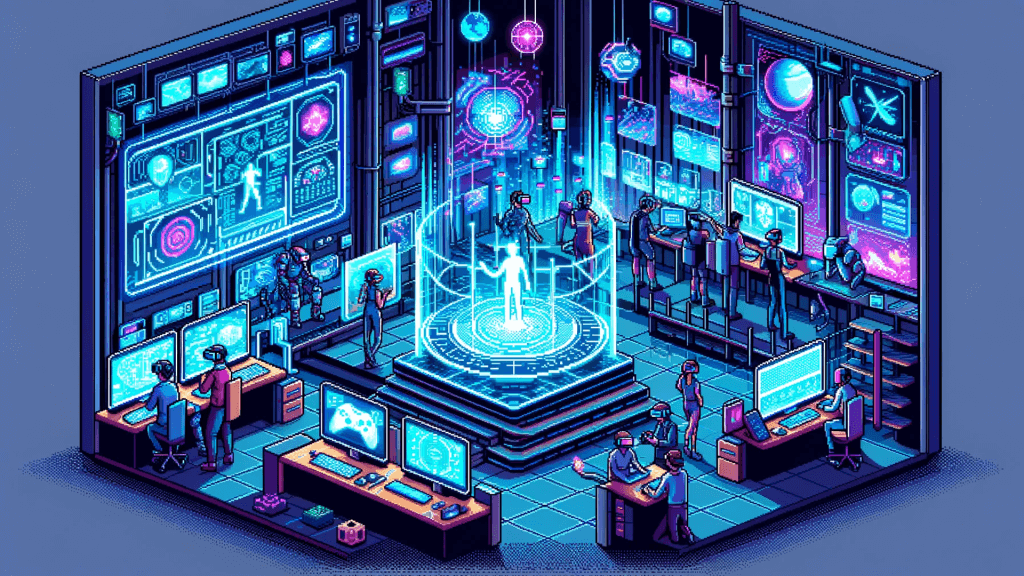
Shifts in gamer demographics and preferences
The demographic of gamers playing web3 games is diversifying – encompassing broader age ranges, genders, and cultural backgrounds – even if they don’t identify as web3 gamers themselves. While the “web3 gamer” segment started out looking to make money from NFTs, marketplaces, and market speculation, increasingly players of web3 games want complex narratives and deeper levels of interactivity, indicating a preference for more immersive gaming experiences.
Innovations in game design and token economies
The future of web3 gaming lies not just in new technologies but also in innovative game design and token economies. Experimentation and iteration still continues in earnest and no one seems to have hit upon a guaranteed winning formula yet. One thing that is clear is that the P2E model of web3 gaming seems to be unviable. Instead, expect to see a shift toward single-token economies with more traditional game monetization models – such as F2P with in-app purchases that are padded with marketplace dividends.
Hybrid marketing strategies
Similar to the way new web3 games are pulling mechanics from web2 games, expect to see web3 marketers begin to pull some strategies from the web2 performance marketing playbook – especially as companies like AppsFlyer and Spindl make inroads on web3 attribution. This will allow for broader reach and scalability than current web3 marketing tactics alone allow for. Companies that can blend web2 and web3 tactics will be much better positioned for larger and more sustainable success.
Key takeaways
It’s clear that, in today’s digital world, there are both challenges and opportunities for developers and marketers. While challenges such as monetization, user acquisition, and social stigma exist in the web3 space, innovative hybrid strategies and community engagement are paving the way for a promising future.
Further reading
- Web3 Games Publishing: What are web3 games – and how to get started?
- Web3 Growth Opportunities for game developers and marketers
If you’re ready to level up your web3 game, check out our platform or reach out to us today!
Keep up with the latest insights from Upptic
Sign up for our monthly newsletter

